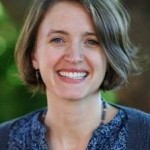We promote a backwards design approach among our instructors…but—ironically—I am only now starting to use it in my own educational development planning and assessment work. Though the task of applying backward design to our entire Centre offerings is too daunting, the application of this concept to a sub-set of our offerings is appealing and makes good sense.
Carol Hurney’s (@hurneyca) session titled “Applying backwards design to your center” (see here for her POD Conference 2015 resources) has prompted me to think further about the application of backward design to the Formative Peer Review of Teaching, one of the programs I oversee.
At this time, the program consists of:
- Peer review of teaching workshops
- Online resources
- A formative peer review of teaching team
And, I have been considering the addition of:
- Open classroom week
- A flipped peer review of teaching workshop
Taking a backward design approach to this program would mean that I:
1) Identify desired results: What do I want the learners to understand and know and be able to do? What are the learning goals and objectives for the formative peer review program? What essential questions will learners explore? What knowledge & skill will learners acquire? Confession: I have done this only for the Workshop, but not for the program as a whole.
2) Determine acceptable evidence: How do I know that the learners (those who participate in the Formative Peer Review of Teaching program) know what I want them to know? Confession: I have this vaguely charted out in my head, but have nothing written down.
3) Plan the learning experiences. What do I need to do in the program to prepare the learners for the above assessment? Status: Naturally, I have this covered!
Where things are at and next steps: Clearly, I have a lot of work to do when it comes to applying a backward design to the Formative Peer Review of Teaching Program. This is one of my planned follow-ups from the excellent POD conference. I’ll keep you posted.
Photo credit: Ian Sane, “Aligning Screwed-Up Planets Of The Universe”. Flickr (CC BY-NC-ND 2.0)




